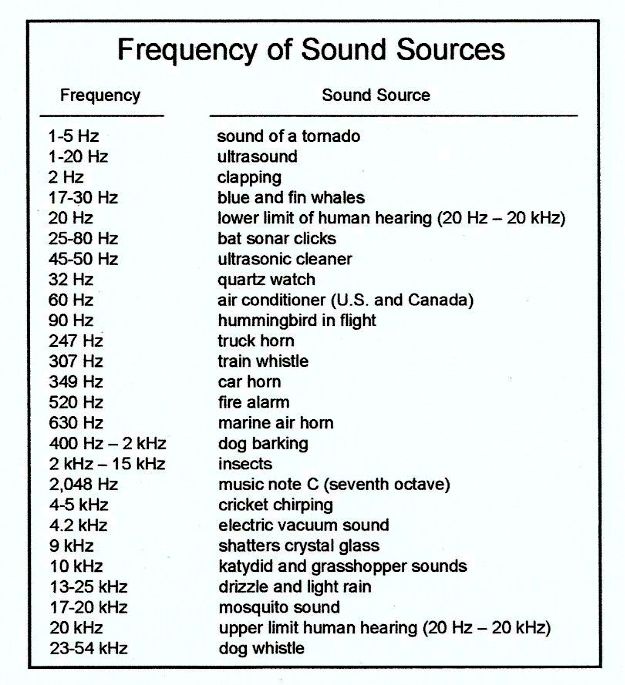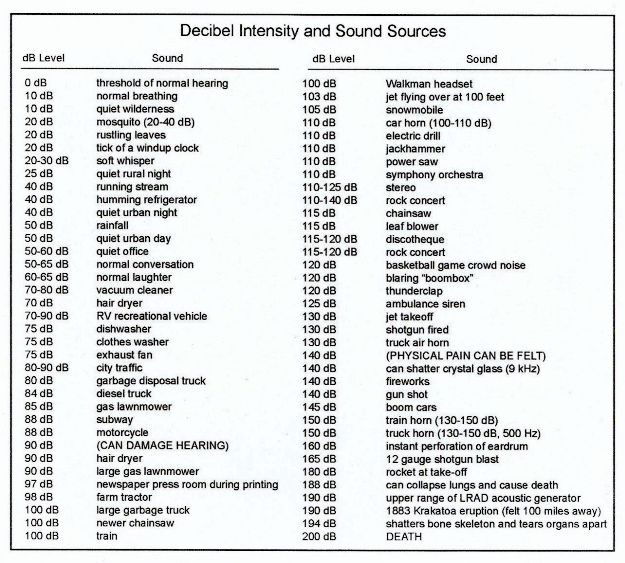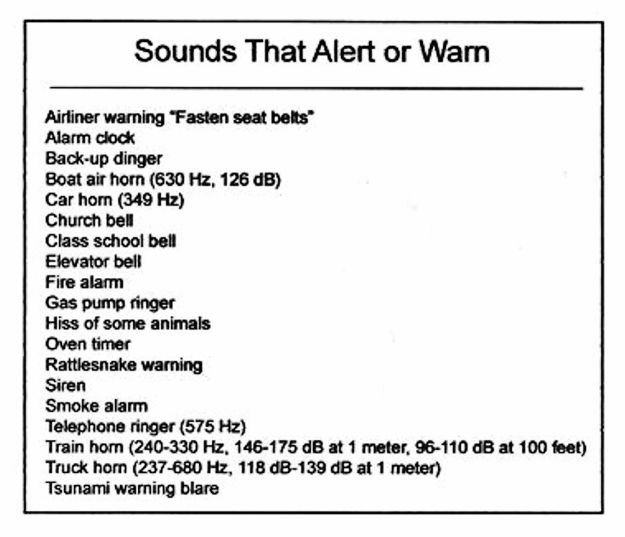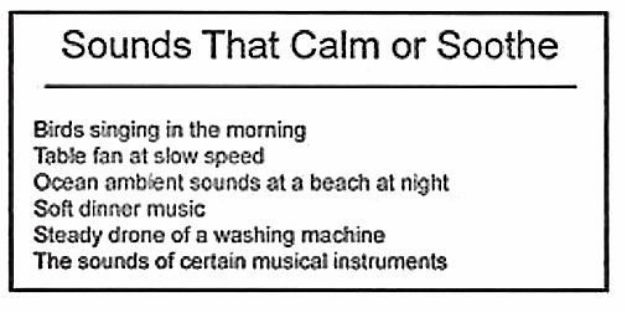Sound As A Defense Weapon: How Sound Frequency Can Cause Pain Find more on: http://www.totalsurvival.net/
What will happen if we use sound as a defense weapon? This article explains the ways in which sound can be an excellent self-defense tool.
Sound as a Defense Weapon: Using Sound Frequency to Survive
What Is Sound?
Sound is all around us and much of it is comforting to humans – the pleasing sound of nice dinner music, a breeze wafting gently through the trees, gurgling water flowing in a brook, or the sounds of children playing – our world is alive with wonderful sound. For most, a sound is a welcome reality.
But when sound becomes noise, it increases stress and introduces emotional reactions in our lives and relationships. In fact, sound can distract, disorient, frighten, or injure. It is a pressure wave. As such it occurs at a certain frequency. These cycles have an amplitude (measured at the peaks) defining the power or intensity of the sound wave. Think of it like “loudness.”
Hearing Range
As shown in Table 1, we can’t hear some frequencies, although some animals can.
Sounds between 20 Hz and 20,000 Hz are considered within our normal threshold of hearing. Sounds below 20 Hz are called infrasonic or infrasound. Low-frequency infrasound at high dB can cause tremors inside our organs and it hurts! Sounds above 20 KHz—our upper range of hearing—are called ultrasonic. At 500 KHz and higher, we label sounds as megasonic.
Frequencies of Sound Sources

Table 2 shows some typical frequencies generated by sound sources:
Decibels (dB) is the measurement of the power or intensity of sound. The decibel provides a relative measure of sound intensity. The higher the dB rating, the more the volume sound has.
The intensity of a sound wave decreases with increasing distance from the source (inverse square law). The power (intensity) of sound is approximately equal to 1/d2 where d equals the distance from the sound source. Double the distance, d and sound pressure (dB) drops to half its intensity. A 40 dB sound at 1 meter drops to 20 dB at 2 meters and just 10 dB at 4 meters. At 0 dB – the softest sound – your ears and brain search for something to hear.
Decibel Ratings of Sounds

Table 3 shows typical dB ratings for various sounds.
How loud is sound? The ear’s response to the loudness of sound occurs as a power of 10. It takes about 10 times the power to sound twice as loud. Loudness varies with age and the physiology of the person. Still, more intense sounds will appear loudest.
Sounds That Alert or Warn

Table 4 lists sound that can stimulate action.
Sounds That Calm or Soothe

As shown in Table 5 certain sounds can calm and relax a person (or an animal).
You can buy sound devices that can produce calming sound to help you relax and fall asleep.
Sound as a Deterrent
Make a sound that’s irritating to a person, and you can deter that person from a certain action. Teenagers don’t like sounds around 20,000 Hz and will try to distance themselves from this sound. A 20 kHz hum has been used to move loitering teens off streets or away from school playgrounds at night. Likewise, a high-amplitude sound can be used as a burglar deterrent.
Some frequencies aren’t heard. Sounds below 20 Hz or above 20 kHz can prove effective in warfare.
Generate high-intensity sound below 20 Hz and people will feel the effect without hearing it. An ultra-high frequency blast at 19-20 kHz will disperse protesters and rioters – especially the younger ones.
Sound That Destroys Matter
By creating sound at the natural frequency of matter, we can cause various materials to vibrate. At enough energy, we can cause this material to break apart and disintegrate. There are devices that can do this today.
You need a strong sound pressure wave to make this happen, but the frequency of a sound generator equal to the natural vibration frequency of a material causes resonance. And the amplitude of vibration of the material increases many-fold until the atoms in the material actually break apart.
Sonic Warfare
In a ‘Walls of Jericho’ scenario, sonic warfare is used to destructively shatter objects and material. It takes a directed concussive effect to vibrate structures to rubble and infrasonic energy to shatter bones and pulp organs from within. But, it is possible. You will need a 240 dB source to get a person’s head to resonate destructively.
These sound waves would have to come from very loud objects, sound waves so powerful they could knock down walls and shake machines to pieces. Several college students showed that low frequencies between 30 and 60 Hz can actually extinguish a small fire using high-intensity sound.
It’s possible to shatter glass with sound by producing a note that resonates sympathetically with the glass.
The natural frequency of the earth is 7.83 Hz. Gold can vibrate at 1.7 MHz—silver at between 4.047 and 4.652 MHz. Even copper can vibrate at just over 28 MHz. The magnetic field around the earth can reduce the resonant frequency of material. For silver, the resonant frequency in the earth's magnetic field would be a low audio 80 Hz (not 4+ MHz).
Sound That Injures or Kills
Between 0 dB and 90 dB, sound intensity is normal and typically won’t damage hearing; however, prolonged exposure to sound exceeding 90 dB can cause hearing damage.
Your body can tolerate 85 dB of sound intensity for eight hours without hearing damage, but at 100 dB, you can only take this for 15 minutes before it affects your health. And at 115 dB you are safe for only 30 seconds. This is why ear protection is recommended for all noisy environments. At 140 dB physical pain can be felt. Go above this and life becomes threatened.
An extremely high-power sound (160 dB) can disrupt or destroy your eardrums and cause severe pain or disorientation. This is usually sufficient to incapacitate a person. Less powerful sound waves can cause you to experience nausea or discomfort.
We’ve all watched the effects of shrill sounds in sci-fi movies when an entire group of people is made helpless by a loud sound permeating the area. They hold their ears and fall to the ground, completely unconscious. And moviegoers wondered if this really can happen.
Yes, it can.
Focused Sound Technology
Several years back, a garage inventor created the ability to place sound energy at a specific location while canceling sound in other nearby areas. He could create the sound of rushing water within a narrow circle in a crowd. People in that circle could hear the water, but people a few feet away could not. This concept is used in shopping malls to lure shoppers.
The focused sound technology was successfully used at checkpoints in the Middle East to stop approaching vehicles far back from where guards were stationed. The device deterred suicide bombers and gave the checkpoint forewarning that a vehicle was not responding to orders to stop.
The garage inventor formed a company (LRAD) and designed sonic and ultrasonic weapons that can incapacitate, injure, or kill. Law enforcement and the military now use their new long-range acoustic device (LRAD) as a directed beam weapon to control crowds and deter pirates or insurgents from attacking ships at sea.
It emits a 2.5 kHz warning tone at 146 dB one meter from the emitter with a maximum range of 300 meters (where the tone is degraded to 90 dB). This can cause nausea, discomfort, disorientation, reduced sensory-motor functions, or severe pain. By transmitting at an ultra-high frequency, an LRAD blast can cause eyeballs to vibrate generating unease and visual apparitions.
The European Space Agency has a sonic weapon that can generate 154 dB sound energy using four giant acoustic orifices. This device can burst eardrums. Increase the loudness to 185 dB and it can cause an air embolism in the lungs or explode the heart.
The Effects of Sound Waves
Whales produce the loudest low frequency sounds on earth — at around 190 dB (17 to 30 Hz). Close up, the high-intensity calls by blue and fin whales can collapse the lungs and cause death to other living creatures.
A car stereo made a world record by pumping out 182 dB of sound that could instantly cause hearing loss. The energy didn't last long. Acceptable exposure time was in seconds.
Sound waves can cause internal bleeding and stop a human heart with a frequency that resonates with the organ. Experts have used sonar in oceans to detect and kill hostile divers by destroying organs and bone. Exposure to high intensity (184 dB) ultrasound frequencies from 700 kHz to 3.6 MHz has caused lung and liver damage. Sound can be a killer.
Try this cool hearing test by Bright Side and find out if you are superhuman or worse than average:
As the mainstream media and liberals push for more stringent gun control measures including restricting gun magazine sizes and ammunition purchases, I’ve often wondered how we can make this behavior a “non-problem.” Then I got an idea, and I’ve been researching it ever since. What if we could develop a defensive weapon that wouldn’t require firearms, ammunition, or permits? What if we use a completely different technology – one that the government doesn't control? What if we use sound for protection? Will you agree?
What are your thoughts about using sound as a defense weapon? Let us know in the comments section below!
Up Next: 5 Surprising Self Defense Tips To Crush Attackers
Editor’s Note: This post was originally published on August 29, 2016, and has been updated for quality and relevancy.
This Article Was First Found at survivallife.com Read The Original Article HereSee More Here: Sound As A Defense Weapon: How Sound Frequency Can Cause Pain
No comments:
Post a Comment